#blossom-end rot in tomatoes
Explore tagged Tumblr posts
Text
A Comprehensive Farming Guide on Tomato Fertilization
Tomato farming in Kenya is one of the most profitable agricultural crops due to the growing demand for tomatoes in both local and international markets. With the country’s population expanding, the consumption of tomatoes, a staple in Kenyan dishes, has increased, making it a viable option for many farmers looking to diversify their farming activities. Kenya’s climate is suitable for tomato…
#agricultural best practices for tomatoes#best fertilizers for tomatoes#biological pest control for tomatoes#blossom-end rot in tomatoes#calcium nitrate for tomatoes#drip irrigation for tomatoes#early blight in tomatoes#fertilization for high tomato yield#Kenya tomato farming tips#late blight in tomatoes#mulching in tomato farming#organic fertilizers for tomatoes#potassium nitrate for tomatoes#soil health for tomatoes#sustainable tomato farming practices#tomato crop rotation#tomato disease prevention#tomato farming in kenya#tomato fertilization guide#tomato fertilization schedule#tomato growth stages#tomato hornworm control#tomato irrigation practices#tomato pest management#tomato pests and diseases#tomato planting tips#tomato post-harvest handling#tomato pruning techniques#tomato variety selection#tomato yield improvement
0 notes
Text
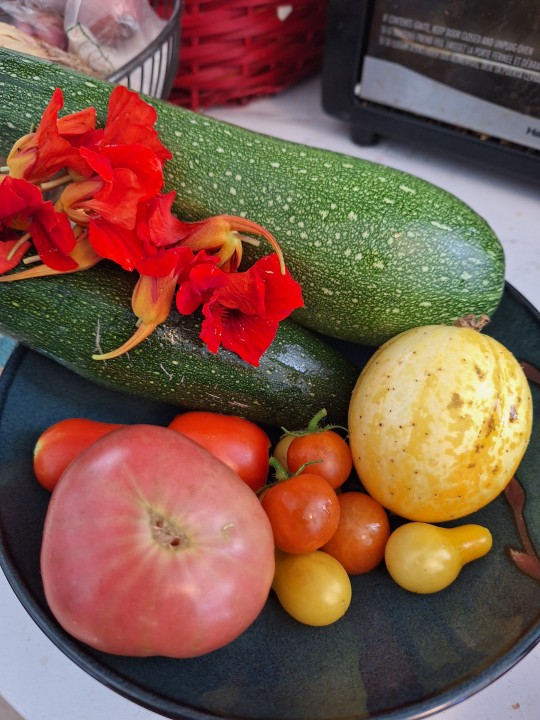
Unexpectedly big harvest from the garden today. That pink tomato is from the 'black tomato' plant. They never turn black--I did let the first ones stay on the vine in the hopes that they'd eventually turn black, but they rotted instead. So I guess it was mislabeled. Pink is pretty too though.
Also, 99% sure my zucchini look that way because of their proximity to the lemon cucumbers. I believe zucchini are typically just green. They taste good though.
#little bit of blossom end rot on one of the tomato plants but not any of the others#which is kinda weird#i should probably put some fertilizer in the beds and pots before everything dies#so many green tomatoes and its starting to be fall#gardening
66 notes
·
View notes
Text

You wish you were me so fucking bad right now…
#and not a blossom end rot in sight!!!!!!!!!!!!!!!!! finally achieved it#garden is ridiculously overgrown bc of 3 weeks no maintenance…#but mostly all the beautiful full sized tomatoes rotting on the vine made me sad like you guys should have at least eaten some…#ah well I knew that by going backpacking at the height of Tomato harvest I’d be making some sacrifices lol#garden#tomatoposting#and this is like. one third of the patch lol#literally couldn’t get to the rest without stepping on plant overgrowth but there are a bunch of full size slicers too
10 notes
·
View notes
Text
🧿 WHO GAVE ME THE FUCKING EVIL EYE ON MY TOMATOES 🧿
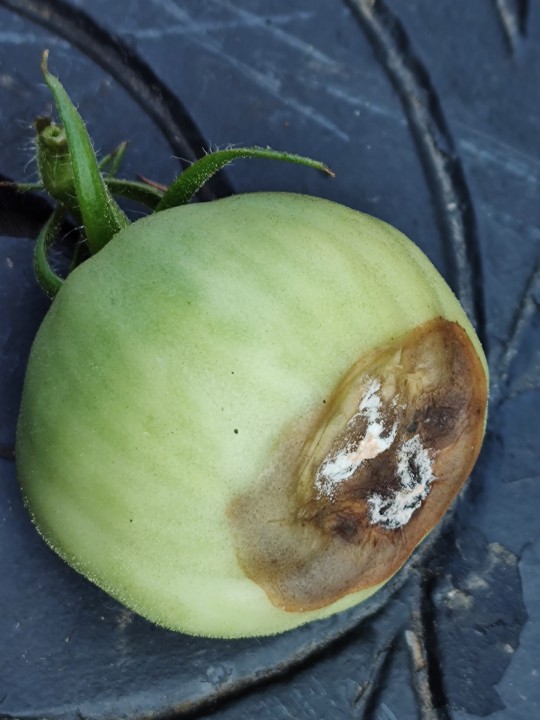

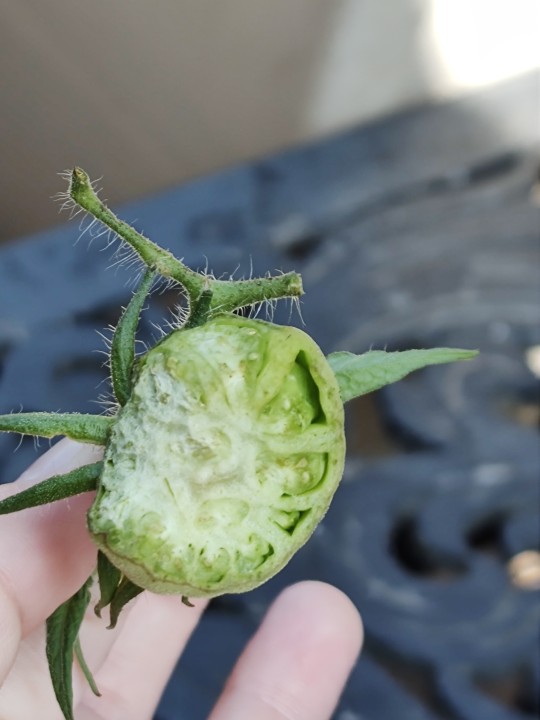
BLOSSOM END ROT AND TOMATO HORN WORM ATTACK ON THE SAME DAY??? WHAT THE FUCK
AND JUST AFTER I POSTED A HAPPY LITTLE PICTURE OF ALL MY TOMATOES GROWING
IM ON TO YOU 🧿
1 note
·
View note
Text
It's actually the vibration from the bees that triggers the pollen to drop from the tomato flowers - it's a technique called sonication. Using a vibrator/electric toothbrush replicates that high frequency vibration and triggers the flower to release the pollen from the anthers onto the stigma.
Tapping behind the flower can have similar results, which might be the "shaking" Derin refers to. (I pictured grabbing the vine and shaking it like it owes me money, so I wanted to clarify!)
You can hear the vibration in this video - it's close to 400 Hz (~400 vibrations per second).
youtube
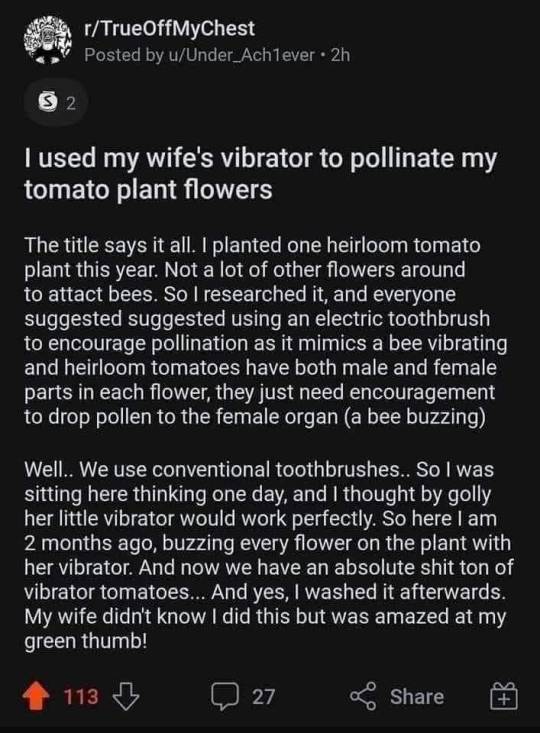
#Gemma rambles#gemma does a science#I worked in a tomato greenhouse for a semester and loved watching the bees#We weren't testing pollination results though#Just Blossom End Rot management#Youtube
55K notes
·
View notes
Link
1 note
·
View note
Text
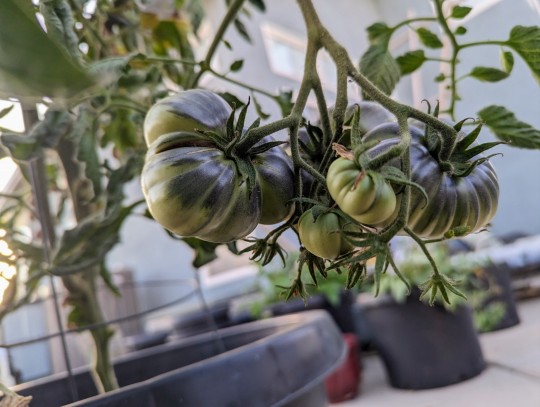

Lucid gem tomatoes and cherry tomatoes
#tomato#cherry tomato#lucid gem tomato#garden#container garden#not pictured:#wicked blossom end rot on the bottoms of my lucid gems T.T
0 notes
Text
Incidentally, blossom end rot on tomatoes is usually caused by a calcium deficiency. You wanna know what a great source of calcium is?
Bone meal. Throw some of that stuff in the planting hole.
Ground up eggshells work too but bone meal is less work tbh. I just chuck the eggshells in the compost rather than trying to grind them up to make them easier for the tomatoes to munch on.
743 notes
·
View notes
Text
is blossom-end rot really just a symptom of calcium deficiency? my slicing tomatoes last year had loads of it but I had terrible soil- this year I have perfect healthy soil that was tested and has loads of calcium but 1/10th of my tomatoes still have big black holes on the bottom.
19 notes
·
View notes
Text
Pumpkins
Myka Bering and the bank own a house. This is important to the story. It is a small house, but it has a front porch that looks out over a quiet street, and French windows that open onto a small back lawn with an apricot tree in the middle. The house is one-hundred and thirty years old, and in a much better condition now than when Myka Bering had first bought it. Then it was sad and unsightly, with paint peeling off its weatherboards and a tin roof that banged in the wind. When you flicked on the light switch it made noises and when you turned the tap on worrisome things happened. But Myka read renovation books and went to night-classes. She stripped and sanded and repainted the house, replacing its rotting weatherboards. She pulled up the old carpet and polished the floorboards underneath. She hung wallpaper, unjammed windows, replaced panes of glass, and even repaired the plumbing herself. But she got an electrician in to rewire the house; and, though she nailed down the loose pieces of her rusty iron roof herself, she began saving up for a new roof. Now the house is trim and tidy and even smart, in a modest way.
The house is in an old neighbourhood that is currently unfashionable. It still has short, narrow streets lined with telephone poles, which cars are slow to navigate, and a small church or a corner store every few blocks. There are orange trees in some people’s yards and old rusted vehicles in others, each yard separated by a completely different style of fence, or a scraggly hedge, or nothing at all, just a strip of grass. Myka Bering says that that one day, when house prices rise and the area becomes desirable, she will be able to sell her house for considerably more than she paid for it. But after she had built and filled an enormous bookshelf that took up the entire internal wall, spanning from the front windows of the lounge to the end of the small dining room, people had decided that she was probably going to stay.
In the evenings, after she has cleaned her small kitchen, Myka Bering might sit down in an armchair beneath the great bookshelf and read. On Friday and Saturday nights she has a glass of wine and puts cello concertos on the stereo; and if it is warm she will open the French windows in the kitchen and enjoy the scent of orange blossom drifting through the house. Sometimes her friend Abigail will come over and drink wine with her and try and talk her into going out.
“It’s been four years,” Abigail will say, “time to get back on that horse, kid. They’re not all secretly married.”
And Myka will roll her eyes and say “I am perfectly content staying at home.”
“Yeah, no shit,” Abigail will say, “Christ, Mykes. I bet I’m the first person you’ve talked to in days.”
“Not true!” Myka will say, triumphant, “I had an exciting conversation with Mrs Kim about the tinned tomatoes she had on sale yesterday! And anyway,” she will add as Abigail rolled her eyes, “I like living quietly by myself. I count myself lucky to be able to.”
“I’m just jealous,” admits Abigail one evening, “Every week I have to explain to my mother why Josh and I aren’t breeding, and hear statistics on the dwindling fertility rate in women our age.”
“Well, she has to tell you these things because you didn’t become a real doctor.”
“Real doctor my ass,” Abigail mutters, and takes a big sip of wine.
“Kids are nice,” says Myka, who is an aunt. “And other people’s kids, who I can leave with their parents at the end of the day, are the nicest of all.”
And Abigail looks about at the tasteful ornaments and unmarked lounge suite and kilim carpet and finds it hard to imagine children trampling into this oasis of calm.
Myka Bering has done well for herself. When she first started living in the house she would get up at five and rush about, taking breakfast with her to eat as she drove to work in the same old Nissan Bluebird that she had had since college. But now she gets up at seven, turns the radio onto NPR, and leaves it playing as she makes herself a cup of coffee and sits down at her computer in the small office she has set up in the back bedroom. She has replaced her old car with one that she doesn’t have to keep having repaired, and she wears nicer suits on the days when she goes into the city. And after a few years she did indeed hire men to come in and replace the old roof, so that she didn’t have to keep climbing up with her hammer every autumn.
But still she continues to live quietly, sticking to her routine. Perhaps she’s more likely to work late into the evenings instead of sitting in her chair and reading. The walls of the back bedroom-office have slowly accumulated pinned maps and diagrams and lists, and the spare bed has become a place to keep folders and file boxes. Myka buys an oak bookshelf for the room and fills it with heavy textbooks on city design and transport planning, and from time to time as she works she will push her office chair across to the shelf and consult one. But other than these few things the room is sparse. While the rest of the house is filled with lovely rich colours, the back bedroom-office, where she spends so much of her waking time, remains white and utilitarian.
“You’ve become a hermit. It’s very you, but it’s not healthy,” her sister tells her on one of her occasional visits. She lives somewhere far away, and when she arrives she has a suitcase and Myka changes the sheets and opens the windows of the second-best bedroom.
“I have a very nice life,” Myka replies.
“You have a very nice house,” rejoins her sister, “It’s not the same thing.”
And then they will quarrel until one of them cries, or stomps out of the room in a temper, or they both become distracted by a pop song from their adolescence.
“Well, if you’re happy I suppose that’s that,” says Abigail with a sigh as she puts her coat on one evening. “Are you happy?”
“Of course I am,” says Myka.
One winter’s day Myka Bering is woken up by a phone call. She has fallen asleep curled around the folders and file boxes on her spare bed, after spending days and nights working on a difficult project. It takes her several tries to get the phone to work.
“H’llo?” she finally mutters into the device.
“Myka! Where are you!? I’m waiting in Arrivals!” says her sister.
“Arrivals?” yawns Myka.
“Arrivals! At the Denver airport! Holy fuck, Myka, have you missed the fucking plane?”
“Wha’?” says Myka sitting up. “No, that’s tomorrow…”
“It IS tomorrow you idiot!” yells her sister. “How could you lose track of the day!? You!? Have you just spent the whole week in that house not speaking to anyone!? Oh my god, you have haven’t you!?”
Myka runs into her bedroom and begins hastily packing a suitcase while her sister continues shouting in a tinny voice that she certainly isn’t going to tell their parents that Myka won’t be making it to Thanksgiving, and that Myka needs to sort her life out.
“My life is fine,” mutters Myka as she grabs her keys and drags her suitcase out to the car.
But perhaps it is time Myka Bering’s life had a little bit of a shake-up. We’ll start small, though. We’ll open a gate.
Myka Bering does not consider herself much of a gardener. This is important too. I suspect the deficit is due more to a lack of interest than a lack of ability, because I believe that Myka can do anything she puts her mind to.
But instead she pays Mr Jackson to keep the strip of front lawn tidy and to mow the grass around the apricot tree every other week. And because she mostly works from home now, when he arrives she will leave the back bedroom-office and help him shift the wooden lawn furniture she keeps under the tree into the driveway, and then back again when he is finished.
The back lawn is perfect. It is flat and even, largely because she had hired a roller in her first year in the house, and had spent several Saturdays onerously rolling the ground flat. In the spring and summer, before Mr Jackson is due to cut it, the grass in the back yard grows almost long, with dandelions and clover flowers everywhere and bees happily wandering about. On sunny evenings Myka Bering sits outside in a lawn chair under the apricot tree, and has her dinner and reads.
Other than the tree — and a small shed tucked up against the back fence — the lawn spreads out to the fence line, unmarred by any hedge or flowerbed. Myka has not grown anything else in the yard in the four years she has lived there, other than some night stock that she planted beside the French windows one year so that the perfume would drift inside the house when she hooked them open in the evenings; but night stock is, of course, an annual, and she didn’t bother replacing it the next year. Myka Bering prefers things neat and tidy and low-maintenance.
Now, decades ago the Alvarado family had lived in the house and had been good friends with the Rojas family in the house next door (that is, until Adriana Rojas ran off to New York with Izzy Alvarado to become Rockettes, thus causing a rupture that was never fully repaired). In the evenings, after supper, the parents would sit together on the front porch of one of the houses and drink beer and talk and listen to the baseball or swing music on the radio, while their children ran up and down the street. And when night fell, and they would call everyone inside and bid each other a good night.
And so, when it came time to replace the old fence between the two properties, Mano Alvarado suggested putting in a gate halfway down, so that the families didn’t always need to walk out onto the street and around every time they wanted to go between the two back yards.
Mano and John Rojas were both builders, and they knew their trade. When they built something, they built it to last for two generations and more. And so the gate still stood there, halfway down the back yard fence, when Myka Bering (and the bank) bought the little house.
Myka had tried the gate once, when she first moved in, and found its old hinges immovable and its latch stuck fast, all fused solid by rust. And deciding that this was as good as a fence she had left it alone. She had painted it, of course, or at least she had painted her side of it; and now it was a fetching bottle green, to match the lawn and the apricot tree. But, not intending to ever use the gate, she didn’t bother replacing the hinges and broken latch, and rarely thought of it again.
And so one afternoon in April Myka Bering is standing in her kitchen putting together a cheese sandwich. It is past three o’clock so she doesn’t allow herself any more coffee, but a snack is permissible. It is spring, and she has the French windows open, and a movement outside makes her look up.
There is a girl in her back yard.
The girl is standing beyond the apricot tree, intently examining a corner of the lawn.
Myka Bering steps out of the house and walks over the perfectly level grass towards her.
“Hello?” she says cautiously, “Can I help you?”
The girl turns to look at her. She is maybe nine? ten? years old and has long, black hair and dark eyes. She is wearing jeans and an adult’s t-shirt that says ‘A WOMAN’S PLACE IS IN THE REVOLUTION’.
“Do you rent?” she asks Myka.
“What?” says Myka.
“Do you rent this house?” says the girl, and then, perhaps supposing that Myka may not be familiar with the concept of renting, she adds: “Does somebody else own your house and you pay them money each week in order to live in it?” She has a vaguely mid-Atlantic accent.
“Oh. No,” says Myka. “I own it. Me and the bank.”
This answer seems to please the girl, though she doesn’t smile. She turns fully around now, so that she faces Myka and holds up an envelope. “Then can I—” she stops, frowns, takes a breath, and starts again “—may I plant pumpkins in your garden?”
Myka blinks. “Well, no. I don’t have a garden… Sorry, who are you? And, uh, where did you come from?”
The girl points with the hand not holding the envelope. The green gate is now ajar.
“How on earth did you manage to open that?” Myka asks. “I was sure it was rusted shut. You live next door? I thought the Menzies were there?”
The girl shrugs. “I don’t know who they are,” she says, “I live there now, with mamma.” She gives an Old World pronunciation to the last word. “Which means we’re neighbours. So can I — may I — plant pumpkins in your garden?”
Myka Bering finds herself looking about for another adult to take over, but her back yard stubbornly persists in containing only the two of them. “Hey, I really don’t know if you should be talking to strangers without your, uh, mamma,” she tries, “You don’t know anything about me. I could be a bad guy.”
“Mamma says it’s perfectly reasonable to speak to people one doesn’t know because otherwise one will never find friends or make one’s way in the world.” announces the girl, “And also that statistically I am in far more danger from family members than strangers,”
“Oh,” says Myka.
The girl nods. “I reminded her that she was my only family member. She said that I would do well to keep that fact in mind.”
Myka looks back at the green gate in the wall.
“So. Mrs Pérez gave everyone in the class pumpkin seeds today, and I want to plant my ones here, please.” The girl, it seems, will not be side-tracked by trivialities like stranger-danger. “She told us that they would be ready by Halloween, and we could make jack o’lanterns.”
“But why can’t you plant them in your back yard?” asks Myka.
With tremendous patience the girl explains. “Because we rent. And Mamma says I can’t dig up the lawn because the landlord mows the lawn himself and he will see. But you don’t rent, and you don’t have anything else growing here, only grass. So can I plant my seeds here?”
Myka Bering tries to think of a reason why the girl couldn’t plant pumpkin seeds in her back yard and fails.
“I… suppose you could,” she says. “Where would you plant them?”
The girl points at the corner she was inspecting. “I thought the pumpkins would be out of the way there.”
Myka examines the spot. It seems as adequate to the purpose as any other.
“Alright,” she says, tentatively, reluctantly. “But right at the edge, okay? I don’t want too much of my lawn dug up.”
The girl nods her agreement. “Thank-you,” she adds, very properly.
“Uh, I think pumpkins need a lot of water. Maybe? You’ll have to look it up. So you’ll have to water them regularly. I’m not going to,” says Myka, trying to regain ground she suspects she has never really had since this conversation began.
“Of course,” says the girl. “I have a watering can.”
“Well then,” says Myka, taking a step towards the garden shed, “Um, do you want a spade or…?”
“I have a trowel,” says the girl. “I only want to make small holes and drop each seed in. You don’t want your lawn dug up,” she reminds Myka.
“No,” says Myka. “I don’t. Well, uh. Okay. G’bye, then.”
“Good-bye,” says the girl, who is already turning towards the green gate in the fence, presumably to fetch her trowel.
Myka watches her disappear and then looks about the back yard. Everything appears quite normal, but she feels a faint apprehension of an approaching change... still beyond the horizon, but inexorably on its way, like the pressure drop before a thunderstorm. After a moment she shakes her head and goes back inside and finishes making her sandwich.
As she carries on with her work that afternoon, Myka Bering occasionally looks out through the window of the back bedroom-office and watches the girl at the end of the yard. The apricot tree obscures much of her activity, but she spends a lot of time carefully digging. And later she has a metal watering can which she judiciously applies to certain spots about her.
That evening Myka goes out to look over the girl’s labours. There, cut into the grass that ran along the fence line, are twelve black holes, each about the diameter of a coffee-cup. Myka looks back at the green gate. It is now shut. Still feeling a little uneasy Myka Bering walks back inside and begins to prepare her dinner.
#myka bering#helena g wells#christina wells#abigail cho#Pumpkins Story#bering and wells#bering & wells
14 notes
·
View notes
Text
my tomatoes have some blossom end rot
3 notes
·
View notes
Text
being the only employee at calloways who doesnt give a shit about plants is so hard like my bedding manager is the same age as me and i remember when she first started working here but she knows literally everything about everything and all i know is that tomatoes and cucumbers need calcium or else they get end blossom rot
2 notes
·
View notes
Text
7/3/23
Found a bit of blossom end rot on this Better Bell pepper, so I used it in a lovely omelette. Idk why the BB makes weird looking leaves/fruit, I’m probably going to pull it at the end of the season and overwinter the others in bed 3.
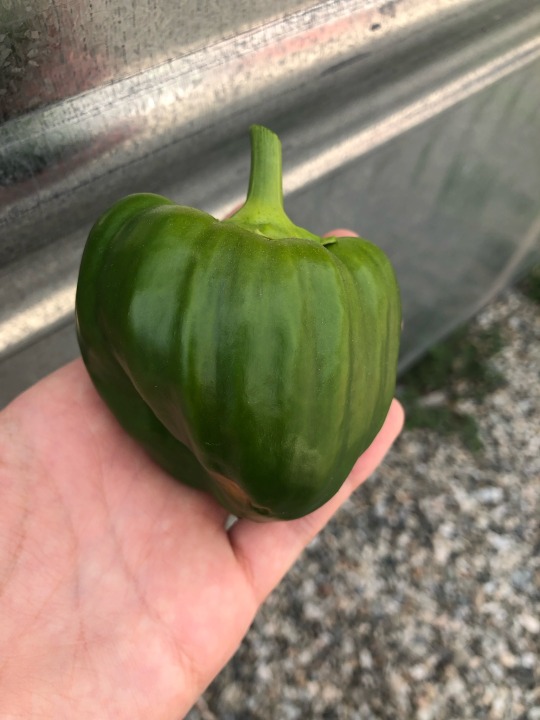

We had enough cherry tomatoes for a delicious pasta lunch today too. So sweet, no extra sugar needed. I found a cute twin tomato.
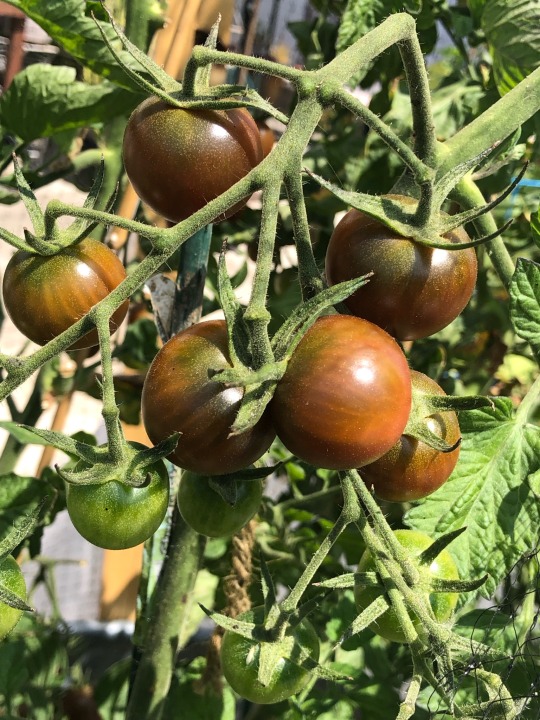
Yesterday we blended the Armenian cucumber into an agua fresca. It smelled just like cucumber, but the texture reminded us of watermelon rind. Maybe I harvested at the wrong time? Still tasty and refreshing when blended with fresh watermelon.
Feels good to harvest and enjoy food from the garden 👍
Bonus: Molly sunbathing
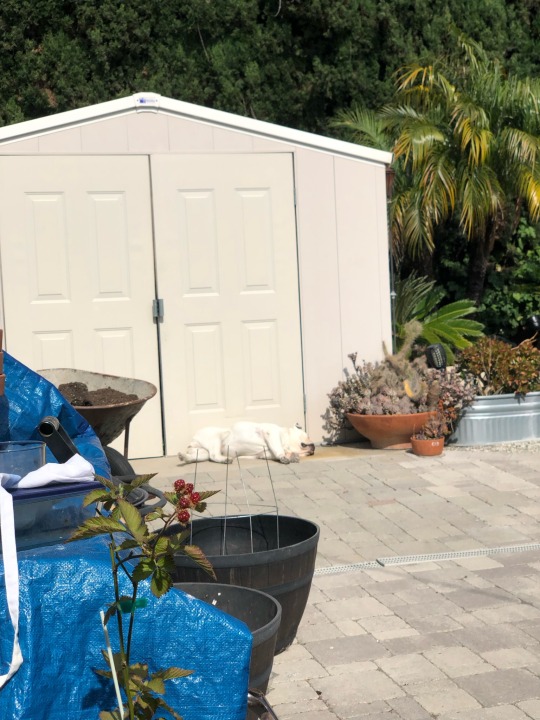
2 notes
·
View notes
Text
June 2023: Harvests & Other Garden Things
Wednesday’s backyard garden harvest including slug bit & squirrel gnawed strawberries:

Thursday’s backyard garden harvest:
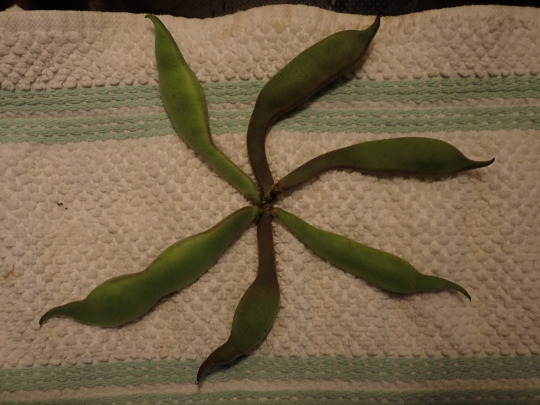
Friday’s backyard garden harvest. You can’t see it but this tomato has a little blossom end rot:
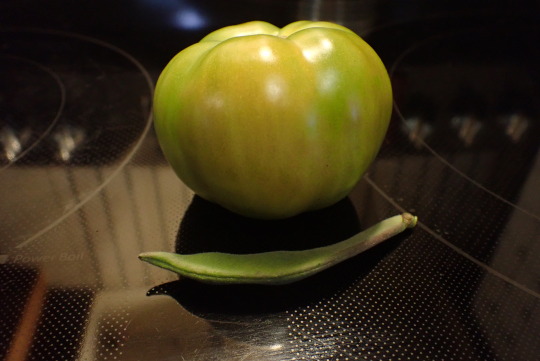

Peek-a-bee:

I haven’t seen garden balsam like this in ages. They must have been in a flower mix that we put out although I don’t remember it being listed on the seed packet:

They’re even forming those seed pods that, when fully developed, will explode when touched & shoot seeds everywhere:



We finally have a cucumber forming:
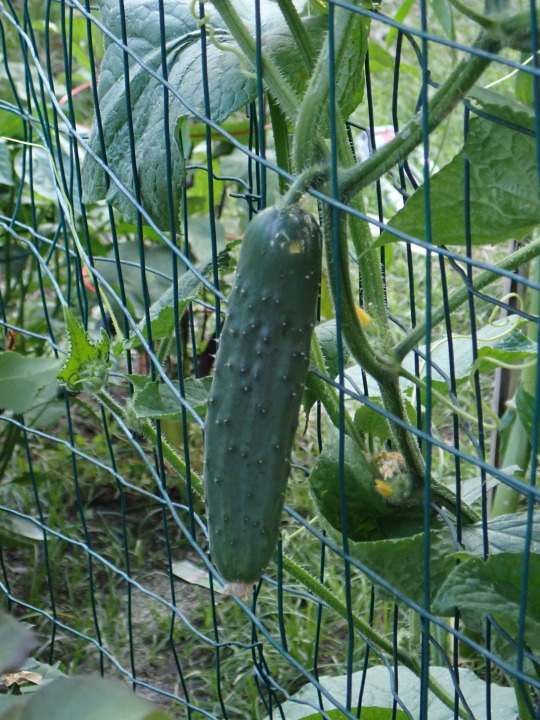

The guardian of the corn leaf:

#garden#backyard garden#homegrown vegetables#homegrown fruit#strawberries#runner beans#tomatoes#better boy#rose#lady of shalott rose#bee#tomato plants#hummingbird#ruby-throated hummingbird#female ruby-throated hummingbird#cucumber#eggplants#ichiban eggplant#corn leaf#spider#crab spider#life in memphis#flowers#succulents#snapdragons#garden balsam#impatiens balsamina
5 notes
·
View notes
Text
Ten Tips For Growing Tomatoes in the East Bay

Introduction:
Tomatoes are a favorite among home gardeners, especially in the East Bay where the Mediterranean climate offers warm, dry summers and mild, wet winters. However, growing the perfect tomato crop takes a little knowledge, the right tools, and consistent care. Whether you’re a seasoned green thumb or a first-time gardener, these ten tips will help ensure your tomato plants thrive in the unique conditions of the East Bay.
1. Choose the Right Tomato Varieties
East Bay gardeners should select tomato varieties that flourish in warm weather but can also handle some cooler evening temperatures. Opt for early maturing varieties like 'Early Girl', 'Stupice', or 'Celebrity'. These cultivars tend to perform well in microclimates and offer a higher yield before the late summer heat takes over.
2. Start with Healthy Soil
Tomatoes are heavy feeders, so starting with nutrient-rich soil is key. Amend your garden bed with well-rotted compost or organic matter to boost fertility. The ideal soil pH for tomatoes is between 6.2 and 6.8. Conduct a soil test to check pH and nutrient levels. You can adjust the soil accordingly with organic fertilizers or lime.
3. Pick a Sunny Location
Tomatoes love the sun. Ensure your tomato bed gets at least 6-8 hours of direct sunlight daily. East Bay gardeners should also be aware of coastal fog and shade from nearby buildings or trees. Select the sunniest spot in your garden to encourage fruit production.
4. Use the Right Gardening Tools
Investing in quality gardening tools will make the process smoother and more efficient. Basic tools like a hand trowel, pruners, gloves, and a watering can are essential. A sturdy tomato cage or trellis system will also support your plants as they grow and bear fruit. Having the right tools can mean the difference between a frustrating experience and a flourishing garden.
5. Water Consistently and Deeply
Inconsistent watering can lead to issues like blossom end rot and cracked fruit. Water deeply and regularly to keep soil consistently moist but not soggy. In the East Bay, where the climate can be dry in the summer, consider using a drip irrigation system or soaker hoses to conserve water and reduce evaporation.
6. Mulch to Conserve Moisture and Prevent Weeds
Mulching around your tomato plants helps retain moisture, suppress weeds, and regulate soil temperature. Organic mulches like straw, shredded leaves, or bark are great options. Apply a 2-3 inch layer around the base of each plant, leaving a small gap around the stem to prevent rot.
7. Prune for Better Air Circulation
Pruning your tomato plants helps improve airflow and reduce the risk of disease. Remove the lower leaves that touch the ground and any "suckers" that develop in the joint between the stem and a branch. This practice focuses the plant's energy on fruit production rather than excess foliage.
8. Fertilize Appropriately
Tomatoes benefit from a balanced fertilizer that includes nitrogen, phosphorus, and potassium. Start with a nitrogen-rich fertilizer to promote leafy growth in the early stages. As the plant begins to flower, switch to a phosphorus-heavy fertilizer to encourage fruiting. Be cautious not to over-fertilize, as it can lead to lush foliage but few tomatoes.
9. Watch for Pests and Diseases
Common tomato pests in the East Bay include aphids, whiteflies, and hornworms. Fungal diseases like early blight and powdery mildew can also be an issue due to morning fog and humidity. Regularly inspect your plants and use organic pest control methods when necessary. Neem oil, insecticidal soap, and introducing beneficial insects like ladybugs can help keep problems in check.
10. Harvest at the Right Time
The best time to harvest tomatoes is when they are fully colored and slightly soft to the touch. Picking tomatoes at peak ripeness ensures the best flavor and texture. In the East Bay, tomatoes typically ripen from late June through September, depending on the variety and weather conditions.
Before You Plant: Plan Your Space and Supplies
Before planting, take time to plan your garden layout and gather necessary supplies. Raised beds or large containers can be great options if you're working with limited space. Also, ensure you have all the essential gardening tools on hand so you're ready to hit the ground running. For a complete overview of tomato growing practices, you can explore the Wikipedia article on Tomato cultivation to deepen your knowledge and gain more perspective on the science behind it.
Final Thought
Tomatoes are a rewarding crop for East Bay gardeners, offering fresh, delicious fruit straight from your own backyard. With the right preparation, tools, and techniques, your tomato plants can produce bountiful harvests season after season. Whether you're growing cherry tomatoes on a balcony or heirlooms in raised beds, a little effort goes a long way. For expert advice, premium-quality gardening supplies, and healthy plants, visit The Evergreen Nursery and let your tomato-growing journey flourish!
0 notes
Text
Why Do Fruits Rot Even With Calcium? Blossom End Rot & The Shocking Truth Most Farmers Don't Know!
Blossom End Rot (BER) is one of the most frustrating and misunderstood problems in farming—especially for tomato, pepper, eggplant, and cucumber growers. You might be applying plenty of calcium, yet your fruits still rot at the bottom! Why? The answer lies not just in calcium supply, but in how plants actually use it. Here’s what textbooks don’t teach you—and what real-world farming experience…
0 notes